This little stewpot carries a very early Dehillerin stamp that I had never seen before.

- Type: Tin-lined stewpot in lightly hammered finish with brass handles attached with three copper rivets and brass lid handle attached with two copper rivets on each end
- French description: Bassine a ragout étamée et martelée avec poignées en laiton munies de trois rivets en cuivre; couvercle posé avec poignée en laiton munies de deux rivets en cuivre sur chaque côté
- Dimensions: 20cm diameter by 11.5cm tall (7.9 by 4.5 inches)
- Thickness: 2mm at rim
- Weight: 2042g (4.5 lbs); 2806g (6.2 lbs) with lid
- Stampings: “ANCNE MSON PERSONNE E. DEHILLERIN SUCR DE LAGALDIE 1.R.MONTMARTRE PARIS” on lid
- Maker and age estimate: Dehillerin; 1885-1893
- Source: Etsy
I love little stewpots like this — they have the proportions of a saucepan, but with two compact handles they fit more efficiently on the stovetop or in the oven. I use this size frequently for two-person meals during the week. They’re also somewhat rare on the antique market, and so I was interested right away when I saw this little guy. But I really snapped to attention when I saw the photograph of the stamp in the listing.

I’d never seen a stamp like this before. It’s obviously E. Dehillerin in the middle, but there is much more going on than the usual “18 Rue Coquillière” address that we know so well. I set myself the task of researching it (with the help and encouragement of Val Maguire at Southwest Hand Tinning) and I think I’ve figured it out: I believe this little pot was one of the first products that Eugène de Hillerin made when he was first establishing himself as a coppersmith in Paris.
The story begins in 1860 with Lagaldie frères, a chaudronnerie et quincaillerie at 1 Rue Montmartre. Lagaldie acquired Personne at 5 and 34 Rue Pagevin around 1870, and ran until October 1882 when it was acquired by Bastid & Fonrouge, a hotel and restaurant supplier. Bastid & Fonrouge continued to run Lagaldie at 1 Rue Montmartre for three more years until 1885, when they moved their business to 39 Rue de l’Arbre Sec and sold the Rue Montmartre property to Eugène de Hillerin.
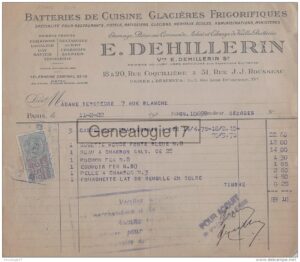 This was not the first Dehillerin property; according to Dehillerin’s history, Eugène’s first business purchase was in 1880 when he bought a workshop 7 Rue de Bouloi (though I have been unable to corroborate this with my own research). The 1885 purchase of 1 Rue Montmartre was a smart move — it was a marvelous location right at the historic food market at Les Halles and had been a chaudronnerie since 1820. (This property may be the basis for Dehillerin’s “since 1820” claim.) Eugène would have wanted to retain the customers of Lagaldie and Personne, and so when he began to produce his own products he included their names in his first stamp. (Dehillerin made many other acquisitions over the years. You can see on the invoice on the right, dated 1922, that Dehillerin was the maison réunis for Personne, Lagaldie, Gay, Savier, Delzangles, Aubry, Charmois, Lasnier, and Tendrerie.) I believe the time window for items with this stamp would have been between 1885 and 1893. Dehillerin bought the property at 18 Rue Coquillière in 1890 but business records suggest he did not use that address until 1894.
This was not the first Dehillerin property; according to Dehillerin’s history, Eugène’s first business purchase was in 1880 when he bought a workshop 7 Rue de Bouloi (though I have been unable to corroborate this with my own research). The 1885 purchase of 1 Rue Montmartre was a smart move — it was a marvelous location right at the historic food market at Les Halles and had been a chaudronnerie since 1820. (This property may be the basis for Dehillerin’s “since 1820” claim.) Eugène would have wanted to retain the customers of Lagaldie and Personne, and so when he began to produce his own products he included their names in his first stamp. (Dehillerin made many other acquisitions over the years. You can see on the invoice on the right, dated 1922, that Dehillerin was the maison réunis for Personne, Lagaldie, Gay, Savier, Delzangles, Aubry, Charmois, Lasnier, and Tendrerie.) I believe the time window for items with this stamp would have been between 1885 and 1893. Dehillerin bought the property at 18 Rue Coquillière in 1890 but business records suggest he did not use that address until 1894.
Thanks to readers Alexrander and Joe W., I have a more clear example of this stamp for comparison so you can see the actual wording. It reads “ANCNE MSON PERSONNE” (for ancienne [old] Maison Personne), “SUCR DE LAGALDIE” (successeur for “successor”) and 1.R.MONTMARTRE PARIS. And in the middle, for the first time, “E. DEHILLERIN” — I wonder if he would ever have guessed that his name would continue for another 135 years!

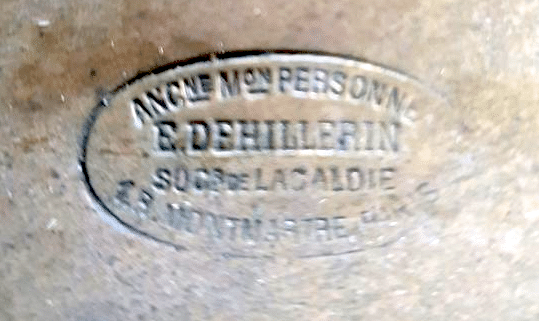
It’s just a charming little pot. At 20cm in diameter — just under 8 inches — it’s about as big as the largest saucepan in a matched set. It’s 2mm at the rim but I suspect the base is a bit thicker, as is often the case with antique pots and pans like this.
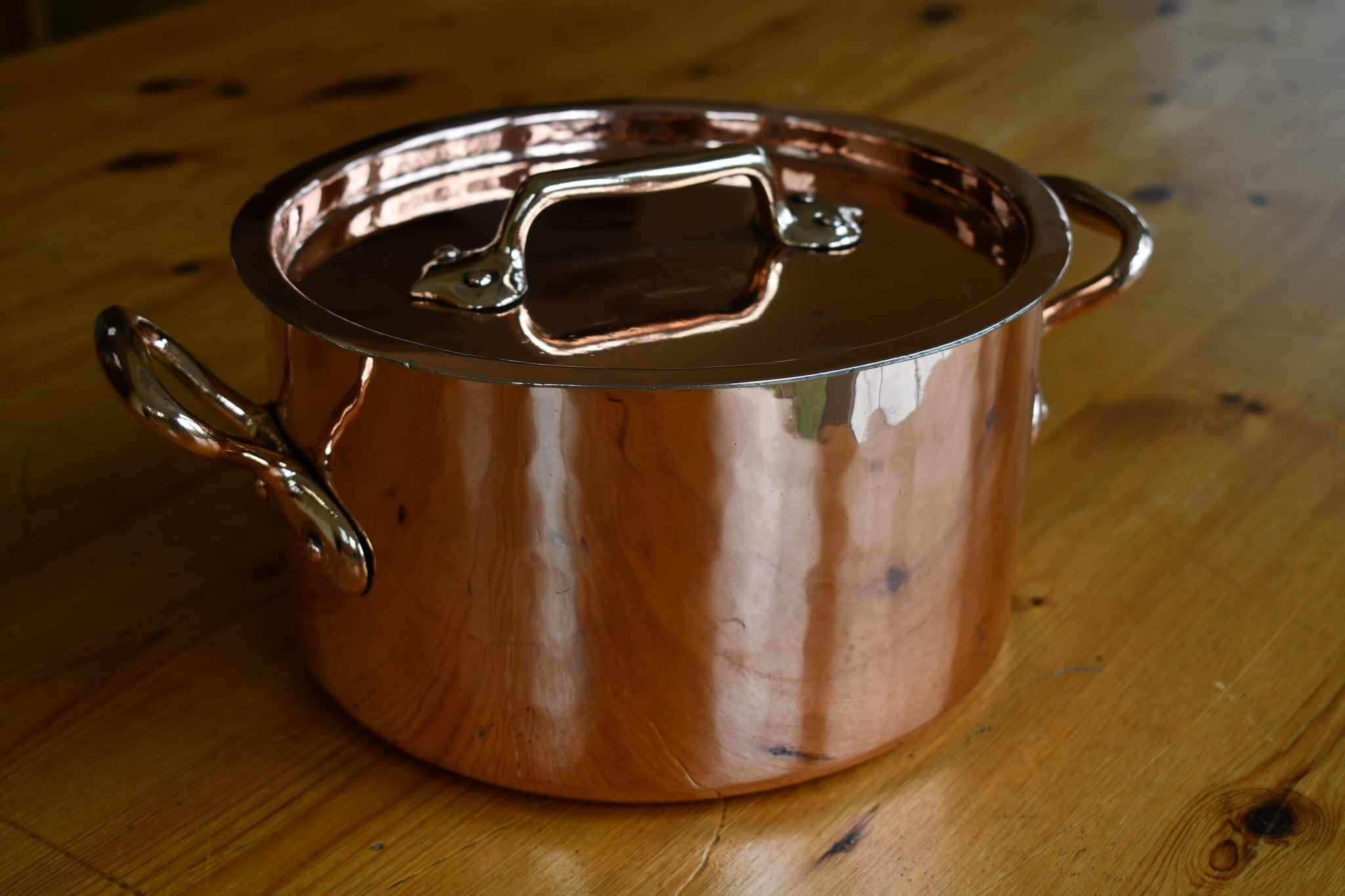

It has the dot in the center of the base as well as under the handle of the lid. This is the divot left by the point of a compass that the coppersmith used to mark the circle on the sheet of copper, and is another sign of 19th-century craftsmanship.


The handles and rivets are lovely. This is not a very heavy pot, and the rivets are small. The handles are in the classic French style with a baseplate finished to a point on the underside. The exterior rivets are small but, let’s be fair, a little unevenly set. The interior rivets are flattened almost flush to the surface.
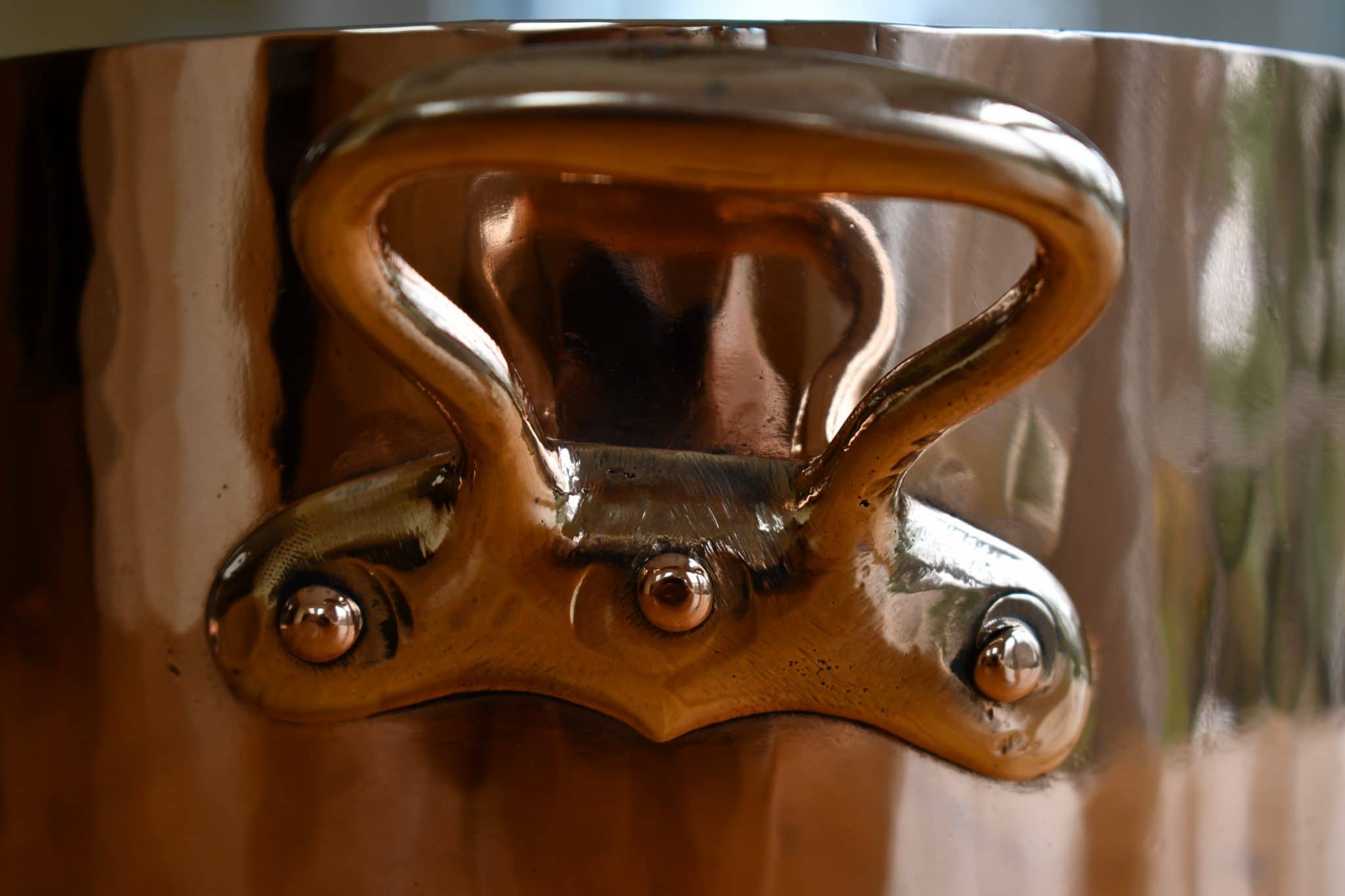

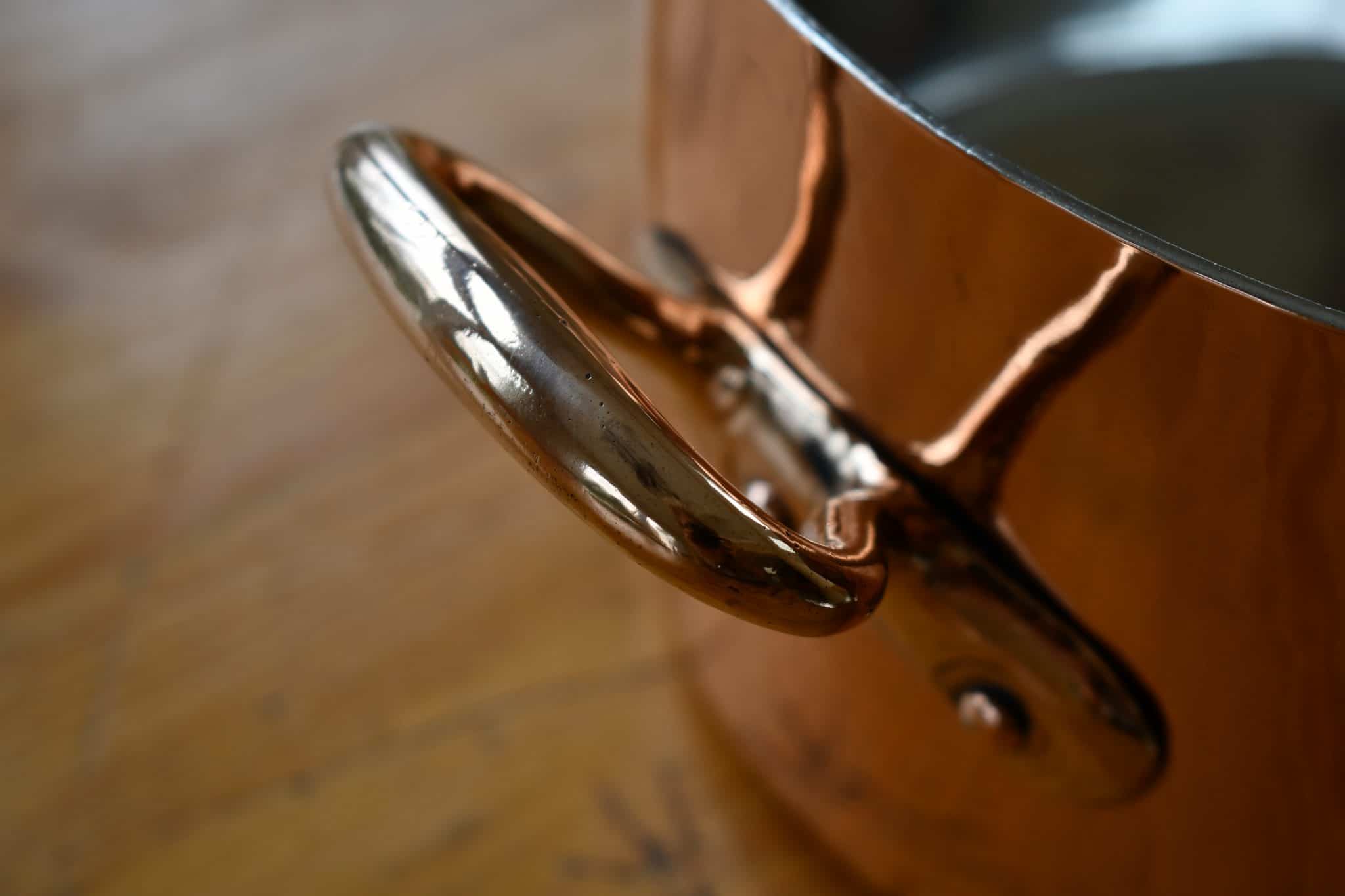
The lid is a nice little piece. The drop is a good centimeter or so, such that the lid settles nicely over the rim of the pan. The lid handle has two rivets per bracket, which is a little unusual for a small piece like this and a nice touch. The rivets are once again a little unevenly set — you can see on the underside that the rivet spacing is not symmetrical.



Erik Undiks at Rocky Mountain Retinning did the restoration work and he did a beautiful job.

If this is an example of early Dehillerin work, it’s a good start. The rivet placement is a little off-kilter in parts but the pot has nice proportions. Dehillerin would go on to become perhaps the best-known kitchenware store and copper cookware source in the world — this little pot, modest as it is, portends much greater things.
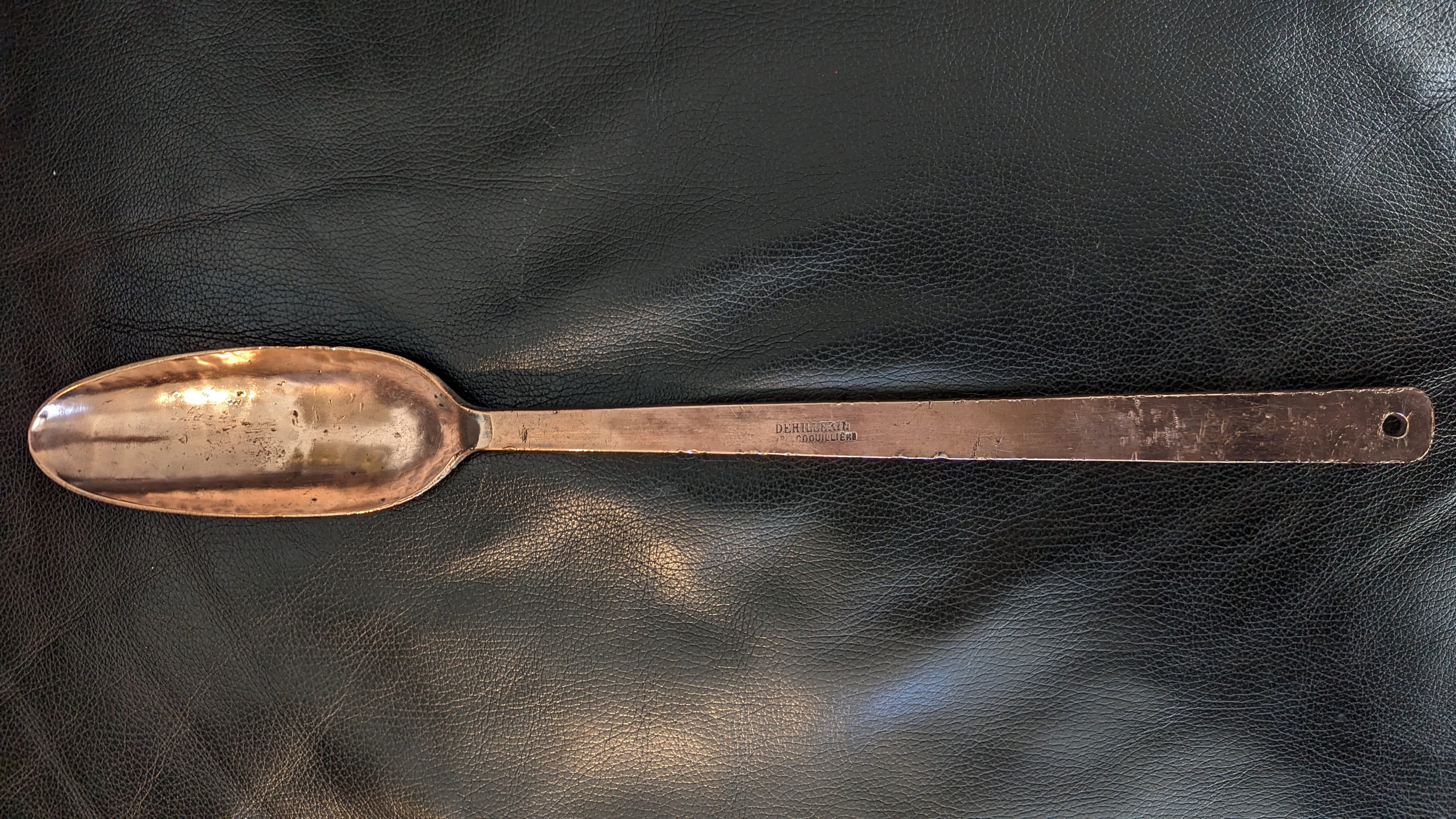

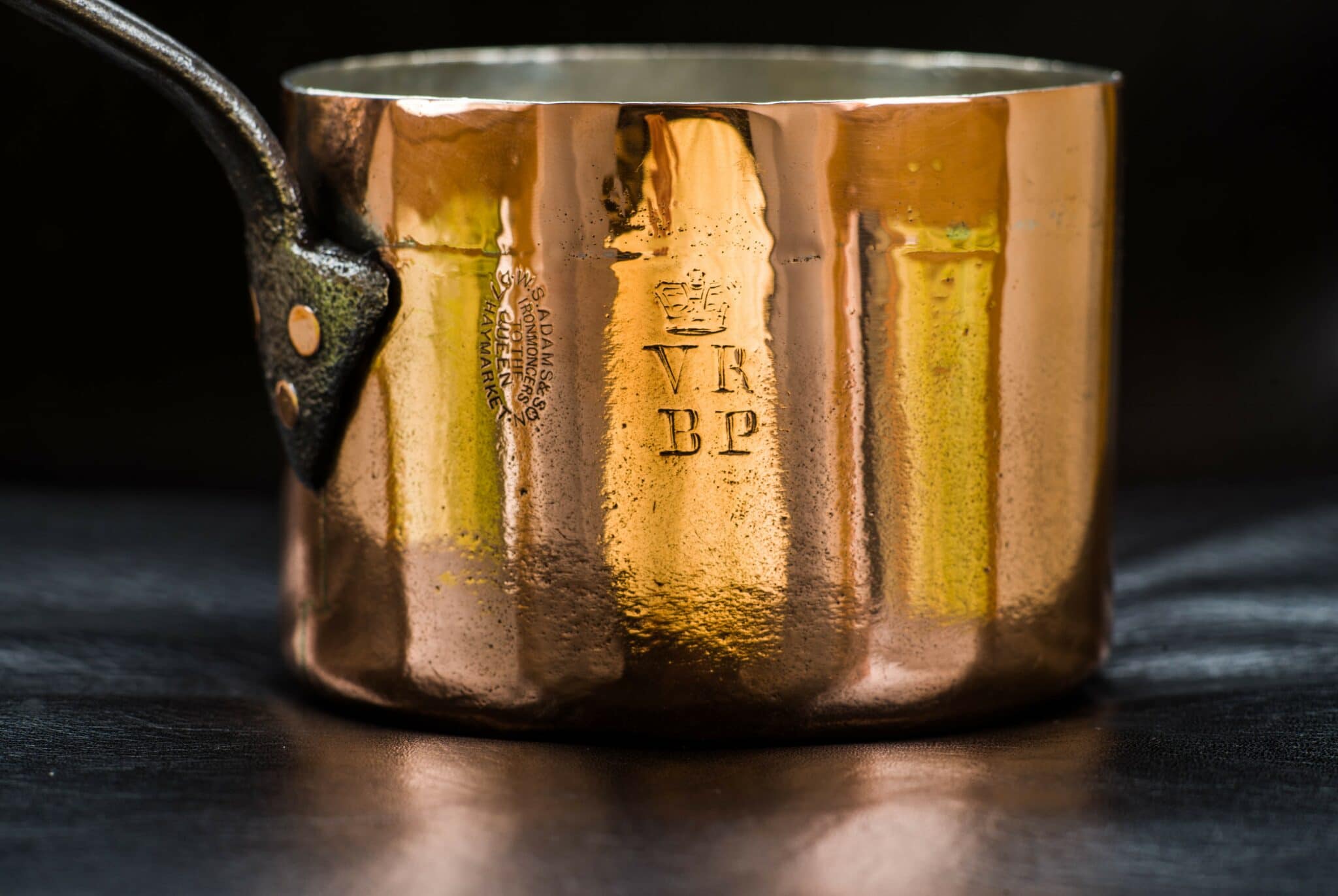

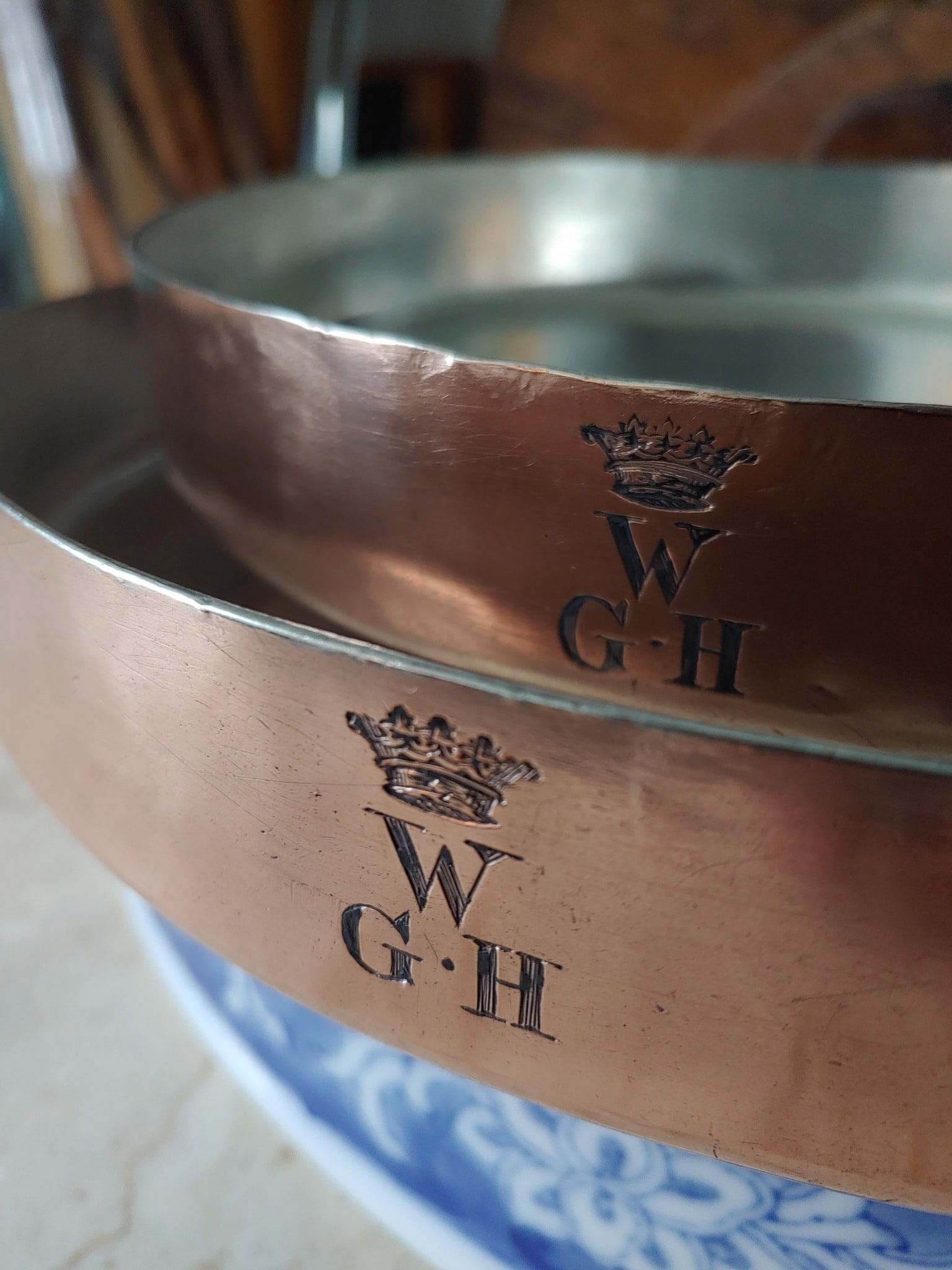
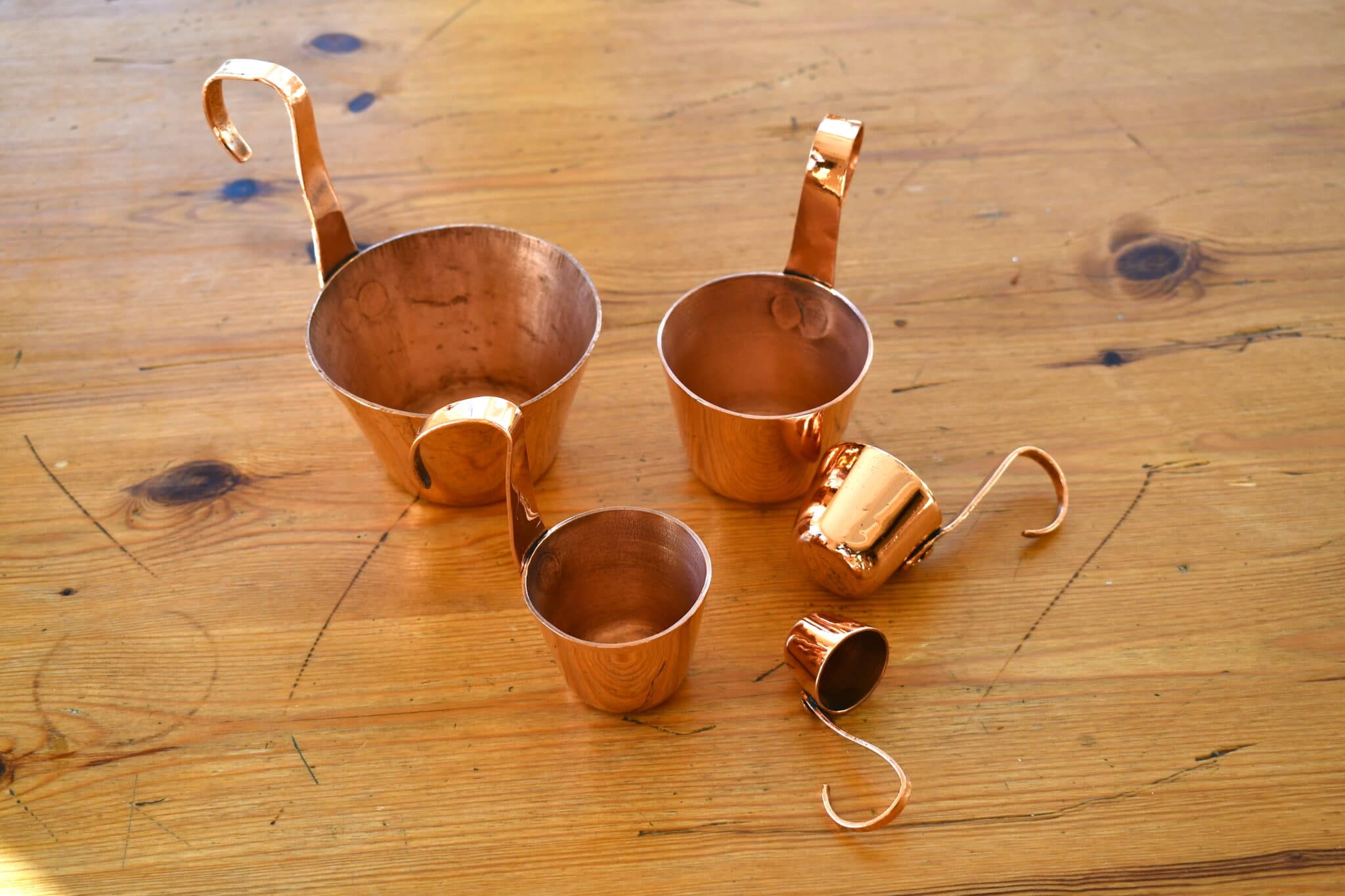
What a wonderful find VFC! Thank you for sharing your research on this wonderful and rare E. Dehillerin piece.
Would you be open to putting something next to your pot/pans as a size guide such as a can of coke, wine bottle &c.? It would go a long way to helping “see” the sizing.
Hello everyone, I am happy to find this image!
I received a single pot with this stamp and unfortunately I lost the photos and the file in an old computer.
The history of DEHILLERIN is full of finesse and it is quite complicated to understand how E. DEHILLERIN started his career. There are specific reasons that explain certain things and one must really be aware of the commercial “war” of this period to understand what really happened. It’s almost a novel full of twists and turns! I hope to find the time to explain all this to you because I see enormous confusion that needs to be cleared up.
Take care of yourself and your family during this difficult period of the virus. T.J.